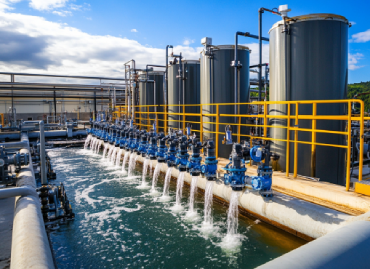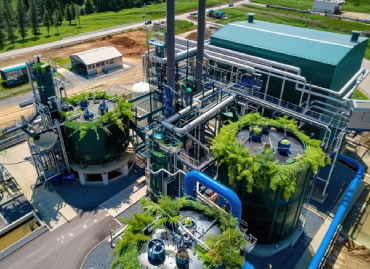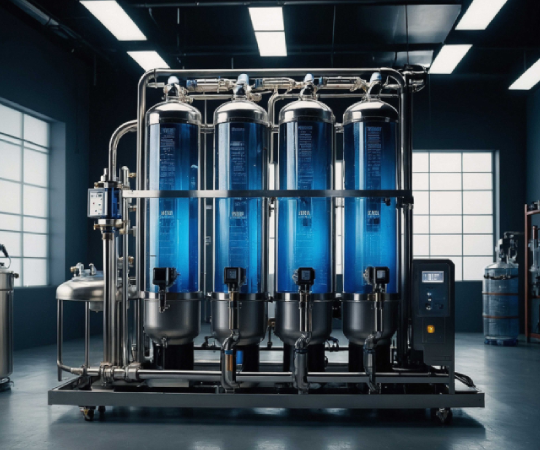- By Admin
- 28 Aug 2025
- ETP Plant
Transforming Automobile Industries with Smart Water and Wastewater Treatment Technologies
The automobile industry in India has emerged as one of the largest and most influential sectors of the economy. Producing millions of vehicles each year, from two-wheelers to passenger cars and heavy-duty commercial vehicles, this sector contributes significantly to employment and GDP.
Maharashtra, with hubs in Pune, Nashik, and Aurangabad, is a prime center for automobile manufacturing, hosting both domestic and global giants. With such rapid growth comes the immense responsibility of managing resources wisely, particularly water, which is essential in nearly every stage of manufacturing.
"Water is not just a resource—it is the lifeblood of every industry. For automobile manufacturing, its responsible use and effective recycling are critical to driving growth sustainably. By treating, reusing, and valuing every drop, industries not only protect the environment but also secure their own future."
Water: The Silent Driver of Manufacturing
In automobile production, water is indispensable. It plays a crucial role in surface treatment, cooling, electroplating, painting, and washing. Factories rely on it for cleaning equipment, maintaining painting booths, preparing metal surfaces, and running HVAC systems.
Paint shops and pre-treatment lines consume some of the highest water volumes, while even simple washing processes add up to a substantial demand. This makes water management not just an operational necessity but a cornerstone of sustainability for the industry.


The Challenge of Wastewater Generation
The extensive use of water inevitably leads to the generation of wastewater. Automobile facilities discharge large amounts of contaminated water carrying paint residues, oils, solvents, phosphates, and heavy metals.
Wash stations create oily effluent, electroplating processes release nickel and chromium, and cooling towers discharge water with chemical additives. Without proper treatment, this wastewater threatens both environmental balance and regulatory compliance. Therefore, robust treatment systems are essential to safeguard both nature and industry.
Understanding Wastewater Characteristics
The types of wastewater in automobile industries are as diverse as the processes themselves. Surface preparation units generate effluent rich in chemicals, while plating sections produce wastewater contaminated with metals like zinc and chromium.
Washing areas contribute oil, grease, and suspended solids, whereas cooling operations discharge water at high temperatures containing dissolved salts and biocides. Each of these requires a specialized approach to ensure effective treatment and safe discharge or reuse.
Multi-stage Solutions for Effective Treatment
To address these challenges, the automobile industries employ multi-stage treatment systems. Primary treatment begins with oil separators to capture floating hydrocarbons. Neutralization tanks restore pH balance, while chemical dosing ensures heavy metals precipitate out of solution.
Sedimentation tanks remove solids, and sand filters polish the water before advanced biological treatment steps like the Activated Sludge Process (ASP) or the Membrane Bioreactor (MBR) systems take over. These technologies ensure compliance with pollution control standards while making water suitable for reuse.
Advanced Technologies Enabling Reuse
The industry's vision of sustainable growth increasingly involves reducing dependence on freshwater. Advanced technologies like Reverse Osmosis (RO), Ultrafiltration (UF), and MBR systems are helping manufacturers reuse water in non-critical applications such as cooling or washing.
RO systems provide high-quality treated water, while UF membranes ensure clarity and consistency. With automation and IoT-based monitoring, treatment systems achieve optimal performance and reduced operational costs, paving the way toward Zero Liquid Discharge (ZLD) goals.
Tailor-Made Solutions for Automobile Units
Every automobile unit is unique, requiring treatment systems tailored to its processes and challenges. Some facilities prioritize oily wastewater management, while others focus on treating paint residues or reducing water consumption in HVAC systems. Custom Effluent Treatment Plants (ETP), Sewage Treatment Plants (STP), and RO systems designed for the automobile industry ensure precise solutions that match regulatory and operational needs.
Conclusion: A Roadmap to Sustainability
Automobile industries are not just about manufacturing vehicles; they are also about shaping a sustainable future. By adopting advanced water and wastewater treatment technologies, these industries can ensure regulatory compliance, reduce freshwater dependency, and minimize their environmental footprint. The adoption of ETP, STP, WTP, RO, UF, and MBR technologies, combined with smart automation, ensures that every drop of water is valued, reused, and managed responsibly.
Summary And Conclusion
The automobile industry is a pillar of India's economic progress, yet it faces a pressing challenge: responsible water management. With vast quantities of water used for painting, plating, cooling, and washing, the generation of hazardous wastewater is inevitable. By deploying comprehensive solutions such as ETP, STP, RO, UF, and MBR, industries can effectively treat and reuse wastewater while ensuring compliance with environmental norms. Advanced automation and monitoring systems make these processes more reliable and cost-efficient. Embracing sustainable water practices is not only an environmental responsibility but also a long-term strategy for resilience and industrial growth.































































